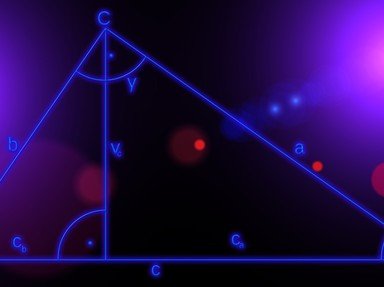Quiz Answer Key and Fun Facts
1. Any coordinate system worth its salt must tell you where certain points are located relative to each other, so they tend to share a few strategies. To measure the distance between points, the space is often divided with axes, lines in each dimension that define the grid. And to give the absolute position of a point, there has to be a zero-point to define the numbering scheme. Suppose I'm standing at that point, where each of my coordinates is zero. Where am I?
2. The first coordinate system a budding scholar learns is also the simplest. Well-suited for drawing on graph paper, it consists of just two axes meeting at right angles: x goes left and right, y goes up and down, and positions are measured on the resulting grid. This system is named after what French philosopher, who famously thought and therefore was?
3. There are many types of coordinate systems: some are very general, and others are more specialized. Often, a coordinate system is best suited for examining some geometry with a particular property: that it looks the same when it's rotated about some axis, say, or when it's reflected across a line. What is this type of property called?
4. A basic, grid-type coordinate system works well for studying shapes that are made up of straight lines, but it is often inelegant when describing curves. A better coordinate system for these purposes is one where a point is specified by a linear distance and an angle, rather than by two linear distances. What is this curvilinear system called?
5. So far, we've looked at coordinate systems that help us plot what's happening on a planar surface, like a sheet of graph paper or a map -- but this just isn't enough for understanding most real-world objects. If we want to examine volumes, not just areas, what must we add to any planar coordinate system?
6. One way of plotting the coordinates of a volume involves two distance coordinates and an angular coordinate. One distance is measured along a central axis, and the other is measured perpendicular to that axis. The angle specifies a point on the circle swept out by the second distance variable. What type of shape is this coordinate system best suited for describing?
7. Other types of volumes are best described with a spherical coordinate system, which features two angular coordinates and one distance coordinate. We use a variation on this system to locate points on the Earth's surface: the distance from the center is just the altitude added to the radius of the Earth. What do geographers call the two angular coordinates?
8. Suppose that you're making a graph whose values span a huge range - there's interesting structure at 1, at 10,000, and at 1,000,000! To display all of this clearly, we can use a coordinate scale where the distance between two points on an axis is defined by their ratio - not by their difference. What do we call this type of scale?
9. Coordinate systems are useful for describing shapes, plotting relationships between variables, and performing various mathematical calculations (like finding the volume of a cone). Yet they can also be useful for exploring more abstract concepts. One such system is the complex plane, which allows mathematicians to plot complex numbers of the form a+bi. What does i mean, mathematically?
10. It isn't only humans who need to find themselves: how do you tell which star is which unless you know where they are? Astronomers use a system called equatorial coordinates, which essentially maps longitude and latitude lines onto the inverted bowl of the sky. But in addition to latitude and longitude, they must also specify what time period, or "epoch," their coordinates are valid for. Why is this?
Source: Author
CellarDoor
This quiz was reviewed by FunTrivia editor
crisw before going online.
Any errors found in FunTrivia content are routinely corrected through our feedback system.

